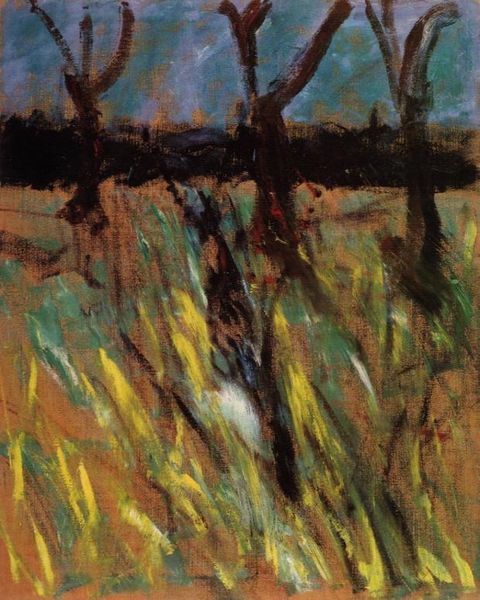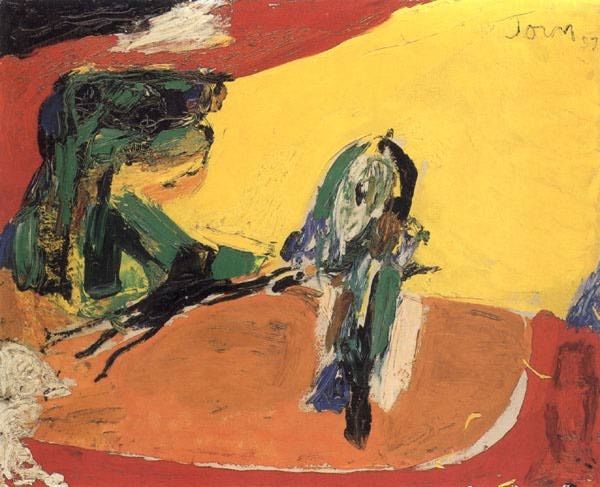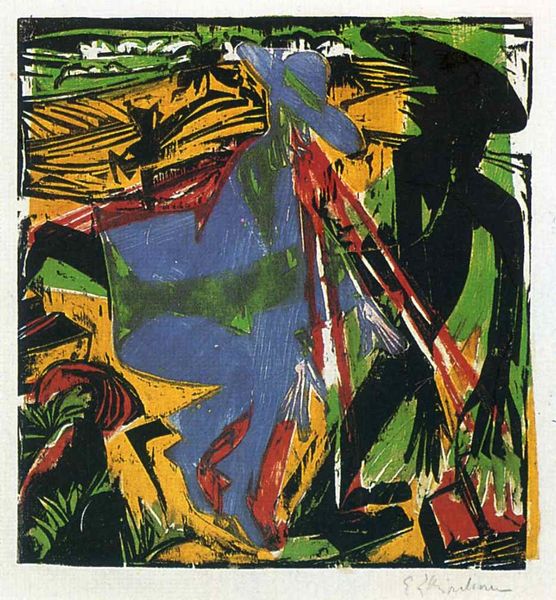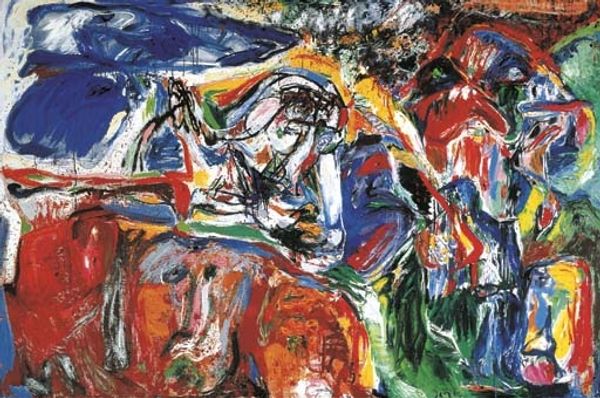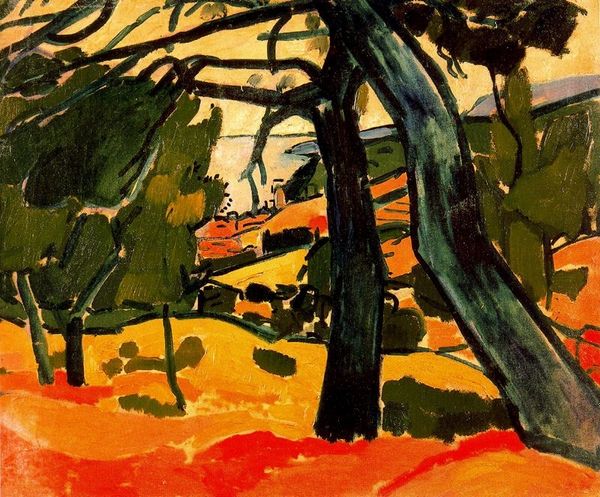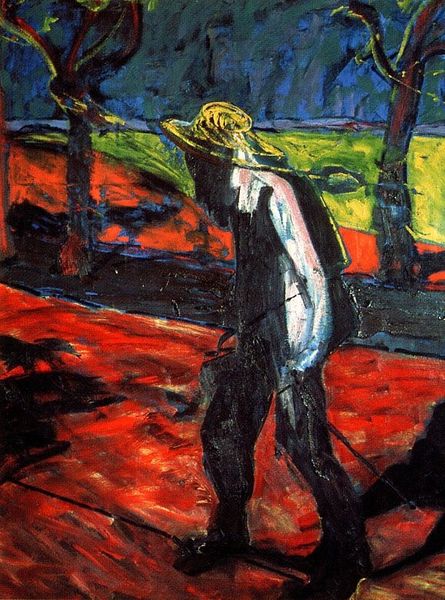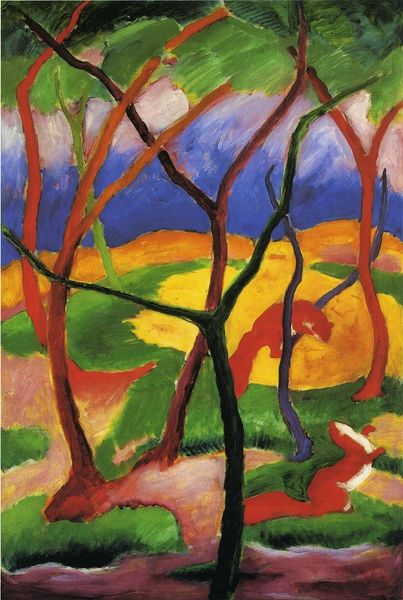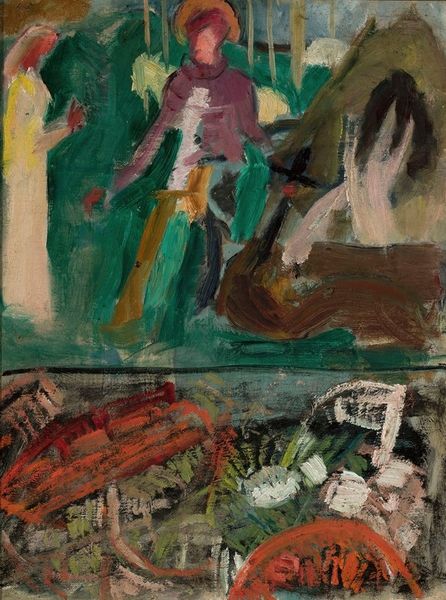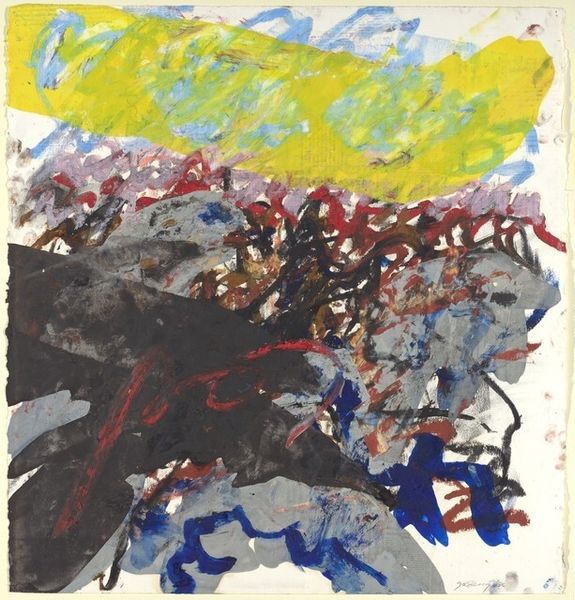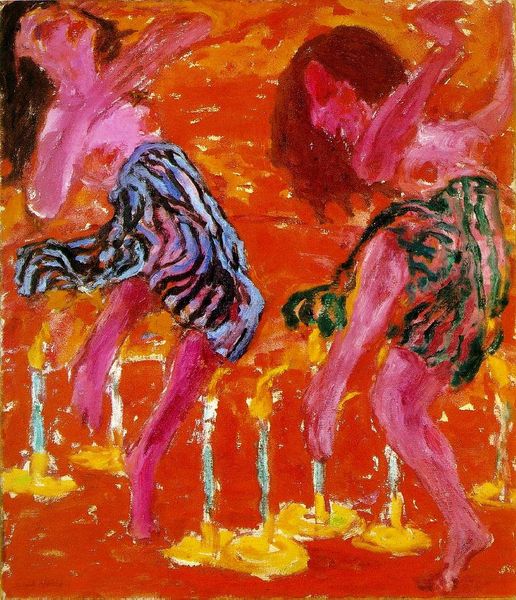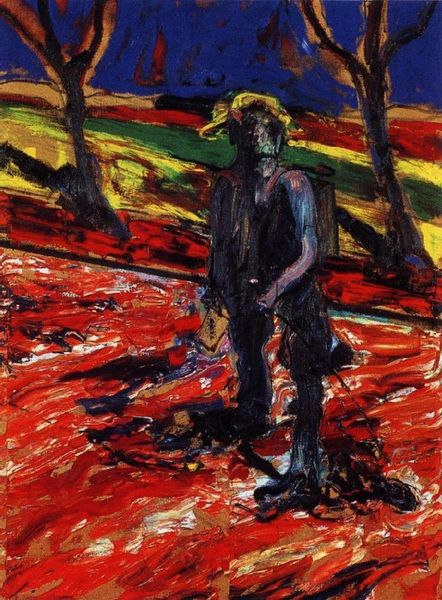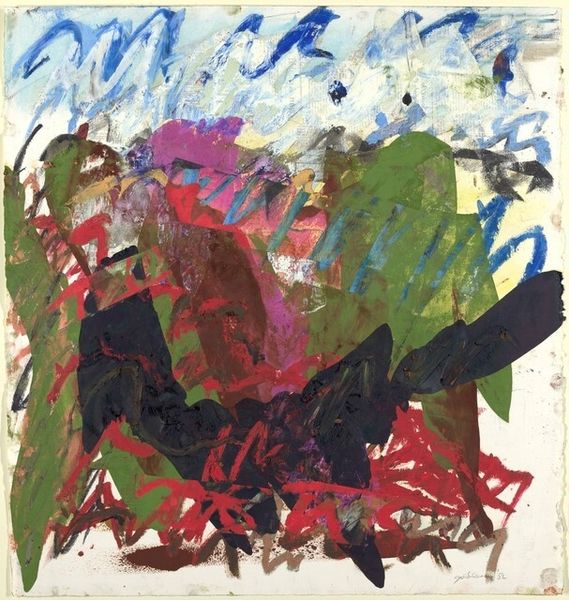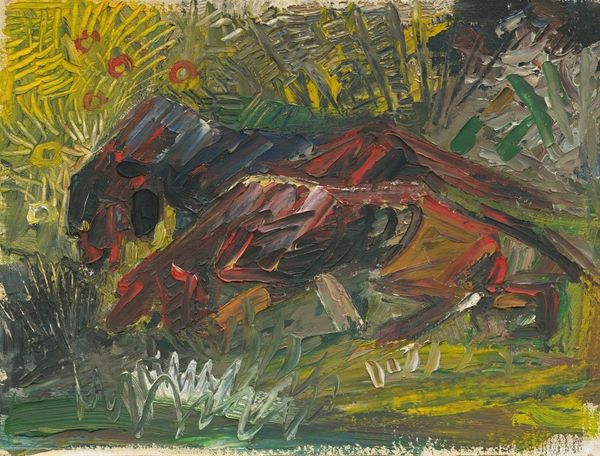
Dimensions: 198 x 142 cm
Copyright: Francis Bacon,Fair Use
Editor: Here we have Francis Bacon's "Study for a Portrait of Van Gogh," painted in 1957. The swirling reds and greens give it a vibrant, almost chaotic energy. What underlying ideas or images resonate with you when you look at this painting? Curator: It's fascinating to consider the layers of reference and emotional charge within this work. Bacon is not simply depicting Van Gogh; he's invoking a cultural memory. Think about the tragic narrative that surrounds Van Gogh - the "tortured artist." Bacon taps into this pre-existing idea, then distorts it, amplifies the sense of unease. The expressive brushstrokes, the blurring of the figure... these aren't just stylistic choices. Editor: So, you're suggesting the style carries the weight of Van Gogh's story? Curator: Absolutely. The abstracted forms reflect the psychological turmoil often associated with Van Gogh. But consider the use of colour. The bright, almost fauvist, palette jars against the sense of suffering we project onto Van Gogh. Red, in many cultures, symbolizes passion, danger, even sacrifice. Is Bacon offering a straightforward portrait or interrogating the romanticized idea of the suffering artist? It prompts us to question the stories we tell ourselves about creativity and mental health. Do you see something there too? Editor: It's interesting that you mention questioning the romantic ideal. Bacon’s distorted portrayal complicates a simple view of artistic genius. I initially saw chaos but understand the symbols offer many different interpretations. Curator: Precisely. The power of iconography lies not in fixed meanings but in the resonance it creates across time and cultures. Editor: I learned more about it, this layering makes Bacon’s study way deeper than a simple portrait.
Comments
No comments
Be the first to comment and join the conversation on the ultimate creative platform.
